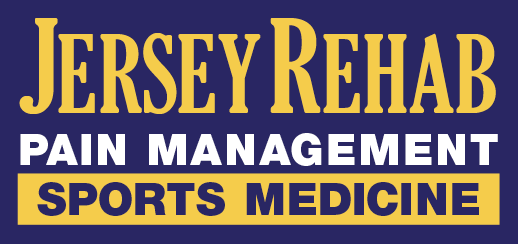Comprehensive Guide to Understanding and Managing Back Pain
Introduction
Back pain is a pervasive issue that affects millions worldwide, significantly impacting daily activities and quality of life. Whether it’s a sudden twinge after lifting something heavy or chronic discomfort from years of poor posture, back pain takes a toll on physical, emotional, and financial well-being.
Understanding back pain is essential not only for effective management but also for prevention. This guide explores the types, causes, symptoms, treatment options, and prevention strategies to empower individuals to take control of their back health.
Types of Back Pain
Back pain can manifest in various ways, and understanding its type is crucial for effective management.
Acute vs. Chronic Back Pain
- Acute Back Pain: This type is sudden and short-term, often lasting less than six weeks. It is usually caused by an injury or strain and resolves with rest and treatment.
- Chronic Back Pain: Lasting longer than 12 weeks, this persistent pain may require a combination of treatments and lifestyle adjustments.
Upper, Middle, and Lower Back Pain
- Upper Back Pain: Typically related to muscular irritation or joint dysfunction, often caused by poor posture or repetitive motions.
- Middle Back Pain: Less common but may indicate spinal issues or referred pain from internal organs.
- Lower Back Pain: The most prevalent, often resulting from mechanical issues, lifestyle factors, or injuries.
Sciatica and Radiating Pain
Pain that radiates down the leg, often caused by pressure on the sciatic nerve, is a hallmark of sciatica. This condition typically stems from herniated discs or spinal stenosis.
Causes of Back Pain
Identifying the underlying cause of back pain is key to choosing the right treatment plan.
Mechanical Problems
- Herniated Discs: A disc’s soft center pushes through its tougher exterior, irritating nearby nerves.
- Degenerative Disc Disease: Age-related wear and tear on spinal discs can lead to pain and reduced mobility.
Injuries and Trauma
Falls, accidents, or sports injuries can cause fractures, sprains, or strains, leading to back pain.
Lifestyle Factors
- Poor Posture: Sitting or standing incorrectly places undue stress on the spine.
- Obesity: Excess weight strains the back muscles and spine.
- Sedentary Behavior: Lack of movement weakens back-supporting muscles, increasing vulnerability to pain.
Medical Conditions
- Arthritis: Can lead to spinal joint inflammation.
- Osteoporosis: Weakens bones, increasing the risk of fractures and back pain.
Symptoms and Diagnosis
Common Symptoms
- Persistent aching or stiffness along the spine
- Sharp, localized pain after physical activity or exertion
- Radiating pain, tingling, or numbness in the legs (sciatica)
Diagnostic Tools
- Physical Exams: Assess range of motion, reflexes, and strength.
- Imaging Tests: MRI and X-rays provide detailed views of spinal structures to identify abnormalities.
- Specialized Tests: Nerve conduction studies may be used for cases involving radiating pain.
When to Seek Medical Attention
If back pain is severe, persistent, or accompanied by symptoms like fever, unexplained weight loss, or loss of bladder control, immediate medical evaluation is necessary.
Treatment Options for Back Pain
Self-Care Strategies
- Rest: Short-term rest can reduce inflammation but should be limited to avoid muscle stiffness.
- Ice/Heat Therapy: Ice reduces swelling, while heat improves blood flow and relaxes tight muscles.
Non-Surgical Treatments
- Physical Therapy: Exercises to strengthen back muscles, improve flexibility, and enhance posture.
- Medications: Over-the-counter pain relievers or prescribed muscle relaxants may offer temporary relief.
- Alternative Therapies: Chiropractic care, acupuncture, or massage therapy can complement traditional treatments.
Surgical Interventions
- Spinal Fusion: Joins two or more vertebrae to reduce motion and pain.
- Discectomy: Removes a herniated disc pressing on a nerve.
Surgery is usually a last resort, reserved for cases where conservative treatments fail, or there is significant nerve damage.
Prevention and Long-term Management
Maintaining a Healthy Lifestyle
- Regular exercise strengthens core muscles and supports the spine.
- A balanced diet helps maintain a healthy weight, reducing back strain.
Ergonomics and Workplace Adjustments
- Use ergonomic chairs and desk setups to support good posture.
- Take frequent breaks to stretch and avoid prolonged sitting.
Staying Active and Stretching
Incorporate stretches and low-impact activities like yoga or swimming into your routine to keep the back flexible and reduce stiffness.
In conclusion, back pain is a complex but manageable condition. Understanding its types, causes, and symptoms empowers individuals to take informed steps toward relief. Treatment plans should be tailored to individual needs, combining medical care with lifestyle changes.
For long-term success, prioritize prevention through regular exercise, ergonomic practices, and maintaining a healthy weight. Consulting healthcare professionals ensures accurate diagnoses and effective management strategies, helping you regain control and enjoy a pain-free life.
Related Articles
Common Causes of Back Pain and How to Prevent Them
Back pain is a widespread issue that affects individuals across all age groups, often stemming from a variety of causes. It can range from a dull ache to sharp, debilitating discomfort, significantly impacting daily life.
Non-Surgical Treatments for Chronic Back Pain
Chronic back pain is a widespread condition that affects millions of people, often disrupting daily life and limiting physical activity. While surgery is an option for severe cases, non-surgical treatments are the preferred starting point for managing this persistent pain.
